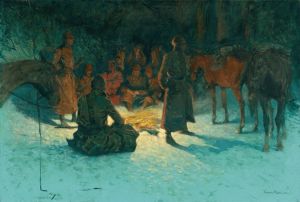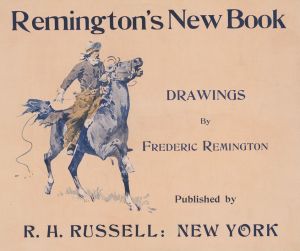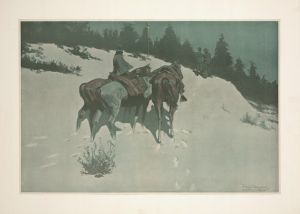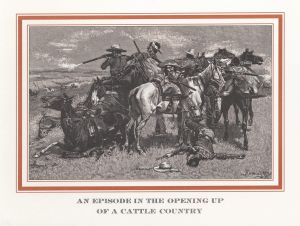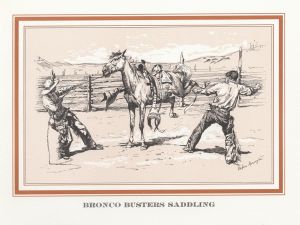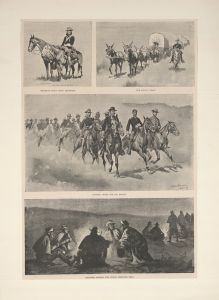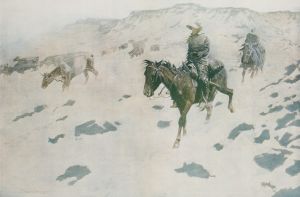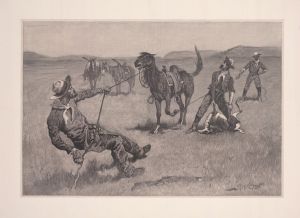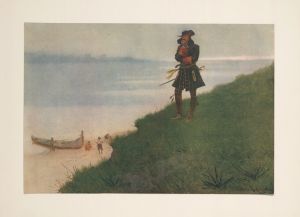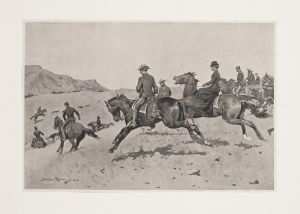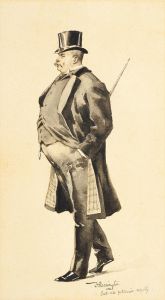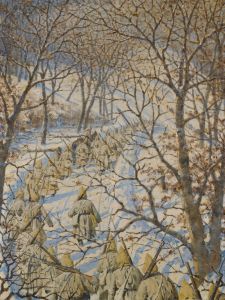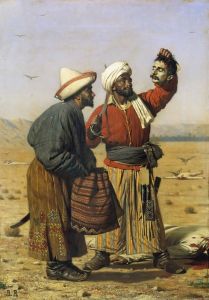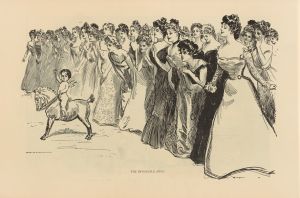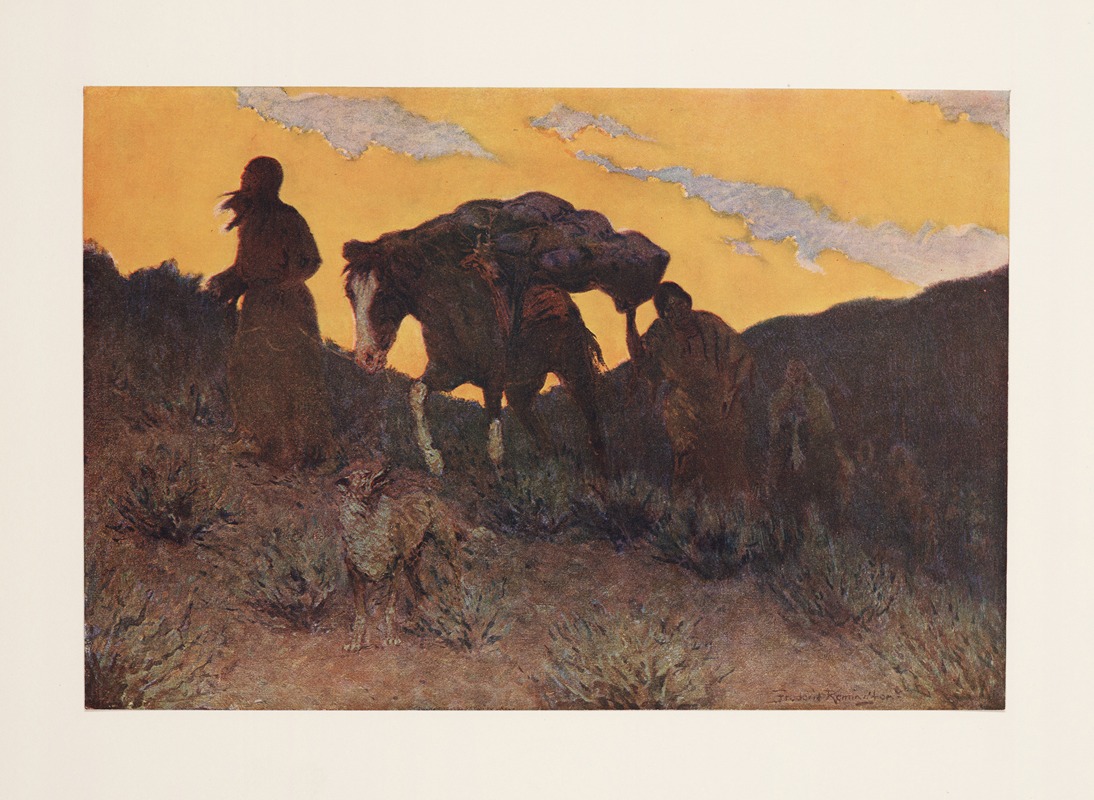
The warrior’s last ride
A hand-painted replica of Frederic Remington’s masterpiece The warrior’s last ride, meticulously crafted by professional artists to capture the true essence of the original. Each piece is created with museum-quality canvas and rare mineral pigments, carefully painted by experienced artists with delicate brushstrokes and rich, layered colors to perfectly recreate the texture of the original artwork. Unlike machine-printed reproductions, this hand-painted version brings the painting to life, infused with the artist’s emotions and skill in every stroke. Whether for personal collection or home decoration, it instantly elevates the artistic atmosphere of any space.
Frederic Remington was an American painter, illustrator, sculptor, and writer known for his depictions of the American Old West. His works often featured cowboys, Native Americans, and the U.S. Cavalry, capturing the spirit and drama of the frontier life during the late 19th and early 20th centuries. Among his many notable works, "The Warrior's Last Ride" is one that exemplifies his focus on the themes of the American West.
"The Warrior's Last Ride" is a painting that reflects Remington's interest in the lives and struggles of Native American warriors. Although specific details about this particular painting are scarce, Remington's broader body of work provides context for understanding its themes and significance. Remington was known for his ability to convey motion and emotion, often depicting scenes that were both dynamic and poignant.
In his works, Remington frequently portrayed Native Americans with a sense of dignity and respect, capturing their bravery and the challenges they faced during a time of great change and conflict. His paintings often depicted the tension between the encroaching modern world and the traditional ways of life of the Native American tribes. "The Warrior's Last Ride" likely fits within this narrative, illustrating the final journey or battle of a Native American warrior.
Remington's artistic style was characterized by his attention to detail and his use of color and light to create dramatic and realistic scenes. He was adept at rendering the landscapes of the American West, with its vast plains, rugged mountains, and expansive skies, which served as a backdrop for the human stories he depicted. His work was informed by his own travels and experiences in the West, as well as his extensive research and interactions with the people who lived there.
Throughout his career, Remington's work was widely published and exhibited, making him one of the most popular and influential artists of his time. His paintings, illustrations, and sculptures contributed significantly to the romanticized image of the American West that persists in popular culture today. Despite the romanticism, Remington's work also offered a glimpse into the harsh realities and complexities of frontier life.
"The Warrior's Last Ride," like many of Remington's works, serves as a historical document that reflects the cultural attitudes and artistic trends of its time. It is a testament to Remington's skill as an artist and his ability to capture the essence of a rapidly changing world. While specific details about the painting may be limited, its themes resonate with the broader narrative of Remington's oeuvre, celebrating the spirit and resilience of the people of the American West.





